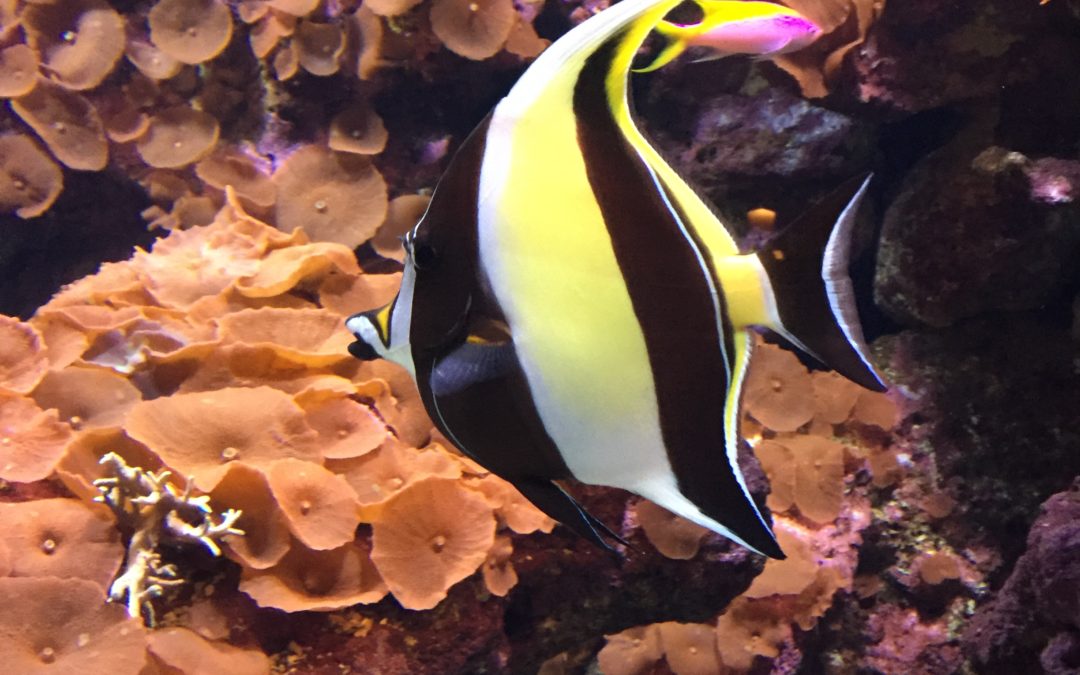How to Maintain a Reef Aquarium
Now that you’ve got your tank established and its first tenants have found their favorite hiding spots, the maintenance begins! Yes, this is all the exciting stuff I know that you’ve been waiting for! To maintain a living reef environment within your own home, you’ll need to test your water parameters every few days. Although testing every 7 days is acceptable, every 2-3 days is ideal to track the production of harmful waste and the usage of beneficial minerals. Especially as you’re starting out the more often you can test, the better off you and your aquarium will be until you can establish a trend and predict your aquarium’s deficiencies. The results that come from these tests can be used to determine how large the water changes need to be and how much dosing needs to be done to replace necessary vitamins and minerals.
Water Changes
In a perfect world, all aquariums should undergo a water change once a week. Studies have shown that water changes that are smaller but frequent are much more beneficial than larger yet infrequent water changes. Ultimately, the amount of these water changes depends on the total “bio-load” of your aquarium. The aquarium’s “bio-load” is basically just the amount of waste being produced less the filtration amount. There is no easy math equation to find this answer, you must be able to judge this for yourself. To calculate the bio-load you should look at the size of your aquarium (how many gallons between the tank itself and the sump below), the amount of filtration there is (size of your protein skimmer, amount of surface area to host beneficial bacteria, number of hermits, snails and other scavengers, etc.) and the amount of waste being produced (number and size of fish, amount of food left to rot, etc).
That information along with the results of the water parameter testing should give you a good idea of the size for the water change. For example, if your nitrates tested to be 40 ppm (parts-per-million) then performing a 20% water change with RO/DI water and zero nitrates would roughly put you at 32 ppm. Voila! Lower nitrates.
Filter Media
Along with weekly water changes, you will also clean and sometimes replace certain filters as part of your reef aquarium maintenance. Your protein skimmer should be tuned properly and when it is, you’ll need to clean the collection cup once a week. The entire protein skimmer itself should be removed and cleaned on an as needed basis.
Other chemical filtration media such as GFO (granular ferric oxide) and activated carbon should be replaced as instructed by the manufacturer. Phosphate removing compounds such as GFO or Seachem’s Phosguard (highly recommended) will tell you how much phosphate they can remove in relation to the size of your aquarium. If you notice your phosphates are no longer decreasing, it’s time to change the filter media.
Mechanical filters such as filter pad, filter socks, and any other filter cartridges should be rinsed weekly as well. Replace mechanical filter media on an as needed basis. If the filter sock begins to hold water faster than it can flow through, it is time to replace it.
Chemical Dosing
You’ll find that to maintain a reef aquarium, each system will have different chemical dosing requirements. Aquariums that primarily consist of LPS (large polyp-stony) or SPS (small polyp-stony) corals will have a higher calcium requirement than that of a tank with a large population of soft corals. It is widely accepted that there are three parameters that must remain in check for any reef aquarium to thrive, calcium, magnesium and alkalinity. Salinity and pH are also very important but these two parameters must be set in place even with a fish only marine aquarium. Iodine, strontium, iron, amino acids & trace minerals are some of the “expert level” reef additives.
Calcium is used primarily by LPS and SPS corals to build their hard skeleton. When you maintain calcium at the proper level, your corals will be able to grow just as much as they would like. Should be maintained at 400-500 parts per million (ppm).
Fun fact, magnesium is the third most abundant ion found in seawater! It’s left behind by sodium and chloride, which of course make salt! Magnesium helps to maintain calcium and alkalinity. Should be maintained at 1200-1400 ppm.
Alkalinity helps to maintain pH and calcium levels. Alkalinity is basically a measure of the waters’ ability to neutralize acid, therefore, alkalinity levels are directly correlated with pH levels. Aim to keep your alkalinity levels between 8-12 dKH.
Conclusion
You’ll need to also consider the aggressiveness of each coral you intend to keep. Some corals need several inches of space between them and any other corals to prevent stinging at night when their sweeper arms come out. Torch corals are notorious for their aggressiveness.
It’s not as easy as a lot of people think to maintain a reef aquarium. Have patience, you may lose a coral or two here and there but if you can learn from what went wrong then you can prevent a similar fate moving forward! As always, please feel free to contact us HERE with any questions.
You may also like:

